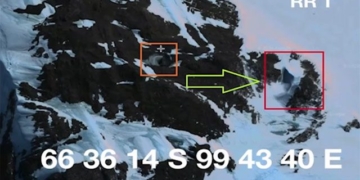The world is full of mysteries, and there are skulls that have been discovered by humans with incredibly strange shapes. Some of these skulls still cannot be definitively linked to any known species.
Strange Skulls Discovered Throughout History
Elongated Skulls
The most well-known among the strange skulls discovered by humans are the elongated skulls. Many of these skulls have been found in Peru, particularly near the Nazca Lines and the Paracas Peninsula. New discoveries are frequently made by grave robbers who sell them on the black market. These skulls are characterized by their flat, elongated shape, and many still retain hair and skin from the mummies. They can also be found in other locations such as private museums – the Paracas History Museum and regional museums in Ica.
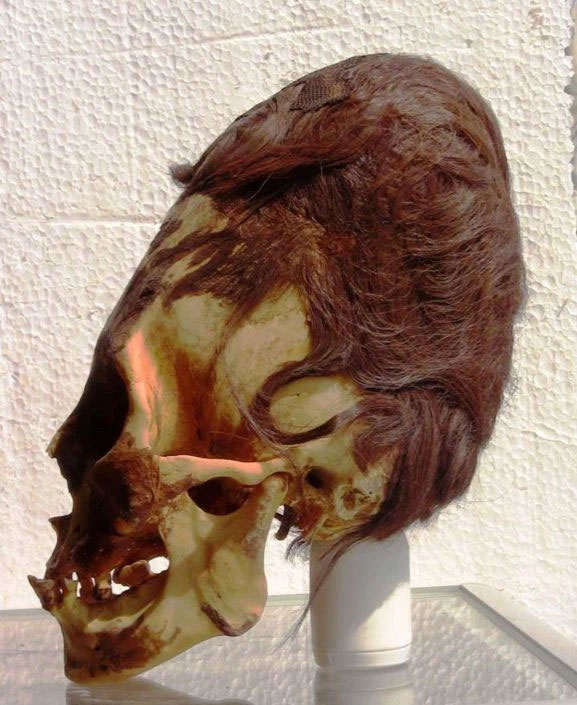
The strange skulls discovered by humans are the elongated skulls.
Similar skulls have also been found worldwide, including in Bolivia, France, Norway, Malta, Egypt, northern Iraq, Ukraine, Siberia, South Africa (where locals believe these skulls belong to the Boskop people), and Vanuatu in Oceania.
Current science suggests that the distorted skull shape is due to an ancient practice among indigenous peoples, who tightly bound the heads of infants to achieve this deformation. However, the reason this phenomenon appears to occur globally, across cultures with no known connections, remains unexplained.
In fact, some of the discovered skulls are nearly twice the size of a normal human skull. Many of these skulls also lack certain cranial features that a typical human possesses, including the frontal and sagittal sutures. However, they exhibit an additional groove running diagonally across the forehead. The bones of these skulls are often much thicker and denser than ours.

Meanwhile, the practice of binding children’s heads does exist in some cultures, possibly as a result of admiration for deities in their beliefs, who are depicted with elongated heads. They mimic the head shape in hopes of resembling their gods.
In Egypt, not only have elongated skulls been found, but also decorations and wall carvings depicting individuals with elongated heads in significant numbers, many traces suggesting they date back to the era of the pharaohs. Egyptologists consider these to be stylized representations of common people wearing royal headdresses. However, unusual elongated skulls have also been found in mummies, such as that of King Tutankhamun, which is unusually long compared to others.
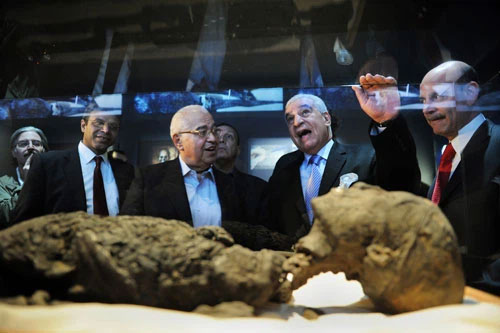
Replica of King Tutankhamun’s mummy at an exhibition in New York.
Some elongated skulls from the Paracas Peninsula have been subjected to DNA testing, but the DNA found does not match any known forms of life on Earth.
Preston Nichols, a technical engineer who worked on the highly secretive Montauk Project near New York, believes these individuals were revered as gods in ancient Egypt, possessing longer heads and larger eyes than humans.
However, there are many conspiracy theories suggesting that these elongated skulls belong to extraterrestrials from the Sirius B system. Indigenous tribes in the mountainous regions of China, Tibet, and the Dogon tribe in Mali, Africa, also recount ancient encounters with visitors from the Sirius star system. The priests of the Dogon tribe informed Western researchers about the existence of a third star in the Sirius system – a small star named Sirius C, long before mainstream science discovered it in 1995.
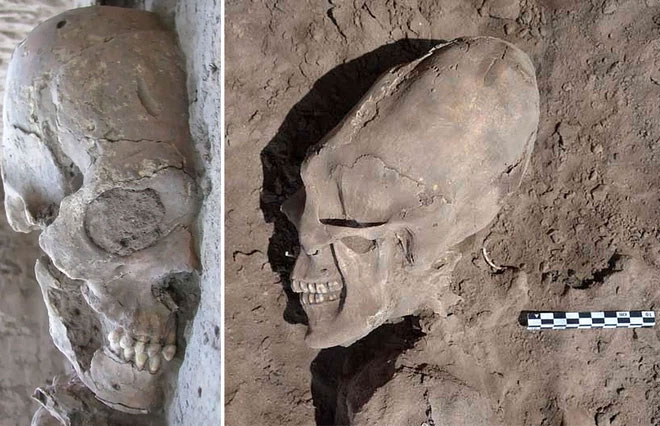
25 skeletons were found in the village of Onavas (Northwest Mexico) in 2012. 13 of them had elongated skulls, and 5 exhibited unusual teeth: sharp incisors and flat canines. Although many details about the graves remain unclear, the research team believes the differences in skulls and teeth are “the result of customs practiced by the wealthy at that time.” In contrast, no unusual signs were found in other simpler graves.
Anunnaki Skulls
Alongside the elongated skulls, these skulls are believed by many conspiracy theorists to belong to a reptilian species from the Orion constellation and the planet Nibiru – over 200,000 years ago, these extraterrestrials were responsible for creating our species, Homo sapiens.
They mixed their DNA with that of the Bushmen of South Africa – who originally came from Lemuria. In this way, they created a new race. The Anunnaki needed gold dust to protect the deteriorating atmosphere of planet Nibiru from the harsh effects of space. Following this event, the Anunnaki continued to visit humans frequently. They intervened in human development in negative ways, even up to recent times.

Top image: a human skull. Bottom image: Anunnaki skull found near the ancient site of Puma Punku in Bolivia. The human skull has a narrow chin, while the Bolivian skull, likely belonging to the Anunnaki, has a wide chin. On the right, you can see that the Bolivian skull cannot belong to a human: the sagittal suture, running from the middle of the head to the back, characteristic of humans, is also not found.
Moreover, researcher Bill Ryan from Project Camelot states that the Anunnaki had significantly larger chins compared to humans. This description fits many of the skulls that have been discovered, which have wide and large chins. The images below clearly show this non-human jaw shape and the absence of certain cranial sutures.
Starchild Skull
This skull was discovered by an American couple in a mine in Chihuahua, Mexico. They later took the skull home and kept it as a memento in their garage in El Paso, Texas, until the end of their lives. In 1998, the strange skull came into the possession of two other residents of El Paso – Ray and Melanie Young.
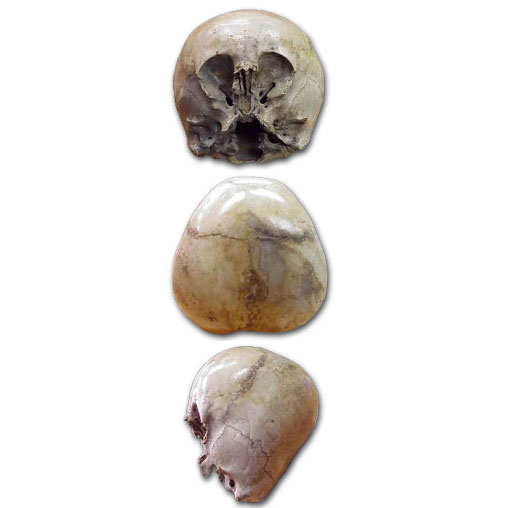
This skull is hundreds of years old, and the mother of this “being” must have been human.
However, Melanie, a nurse, believed that this skull was a human deformity, so she gave it to author and researcher Lloyd Pye (who was only 18 at the time), who had written a book about human-like creatures such as Bigfoot in America and Yeti in the Himalayas, and about the influence of the Anunnaki on human development.
Pye was fascinated by the skull (which only retained the upper part) and conducted DNA tests on it multiple times. This repeated testing showed that the skull was hundreds of years old and that the mother of this “being” was likely human, but the DNA of the father indicated that it did not match anything found on Earth. Pye named this being “Starchild” and proposed the skull for scientific study. However, they showed no interest and deemed it a part of a deformed human skull of a child likely to have died from congenital hydrocephalus. Later, a similar skull was found in Peru.
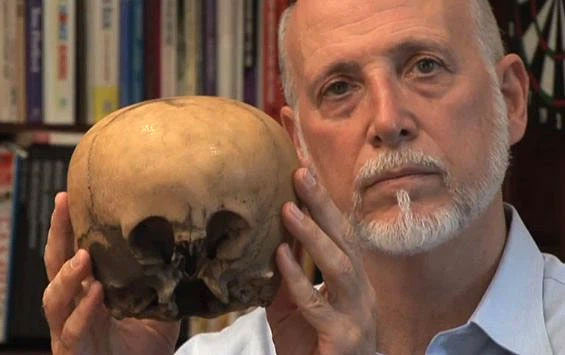
Lloyd Pye (1946 – 2013) with the “Starchild” skull.
Sealand Skull
The Sealand skull was discovered in 2007 in Olstykke, Denmark, by workers replacing drainage pipes. Due to its strange shape, most scientists dismissed it as a hoax and showed little interest in studying it. It wasn’t until 2010 that this skull was first examined at the Danish Veterinary College.
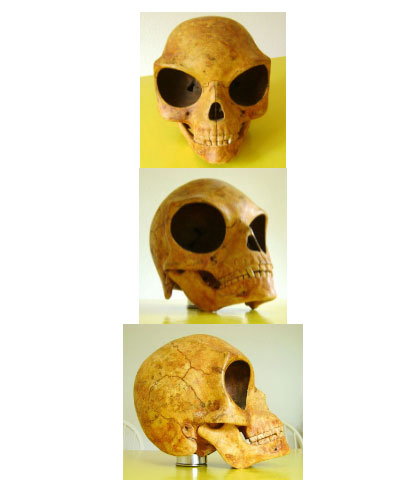
Scientists are unsure which species it belongs to on Earth.
Researchers have concluded that it is real, but they do not know which species it belongs to on Earth. This skull is larger than that of Homo sapiens, leading them to initially suspect it might belong to some type of horse. However, further examination revealed that it does not belong to any horse species either.
The skull was later sent to the Niels Bohr Institute in Copenhagen. Carbon dating revealed that it belonged to a creature that lived between 1200 and 1280 BC, but they could not provide any further information about the origin of the skull. To date, this is the only skull discovered, and many excavations around the area where this skull was found have yielded no other bones.
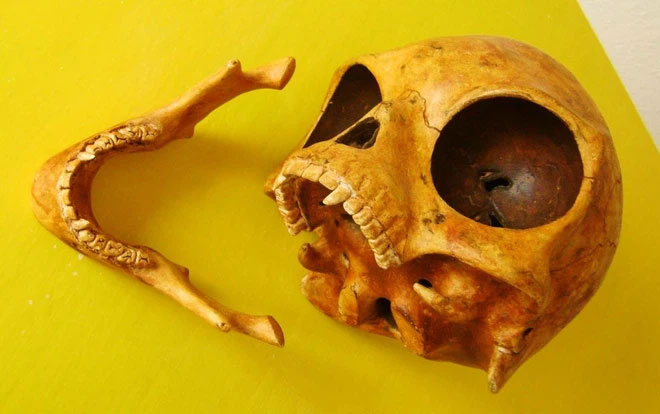
Carbon dating revealed that it belonged to a creature that lived between 1200 and 1280 BC.
The 13 Crystal Skulls
These skulls are made of a crystal-clear material, not a product of modern reproduction or molding. All 13 skulls are scattered around the world, passed down at least since the time of the Maya civilization.
It is believed that once these 13 skulls have the opportunity to come together, something significant will happen for humanity, or they contain some great secrets, waiting for the right moment or someone to unlock this door.

Currently, the world still has no answers for these “mysterious” skulls.
Legend has it that long ago, there were as many as 12 extraterrestrial races living on Earth, but due to some events, they could not remain here.
Each race left their knowledge in a skull, and the 13th skull is the key to unlocking this secret.
Those who have owned one of these skulls have reported extraordinary experiences that are hard to articulate; the skulls can communicate through thought transmission, heal illnesses, and contain the secret to longevity.
Currently, the world still has no answers for these “mysterious” skulls, but one thing is certain: they do not belong to our civilization; they belong to a source, a being, or a civilization that humanity has yet to discover.
The Andahuaylillas Mummy
In 2011, Renato Davila Riquelme from the Privado Ritos Andinos Museum in Cuzco, Peru, made an astonishing discovery – a mysterious mummy with an elongated skull found in the city of Andahuaylillas, a province in southern Quispicanchi, Peru.
This mummy has a bizarrely shaped head measuring 50 cm in length, but its body is as small as that of a newborn (the skull is nearly the same length as the body). The mummy’s teeth are fully grown, but it has fewer molars than a human. Its eye sockets are also much larger than those of a human. Its fontanelle is open – which typically only occurs in infants under one year old.
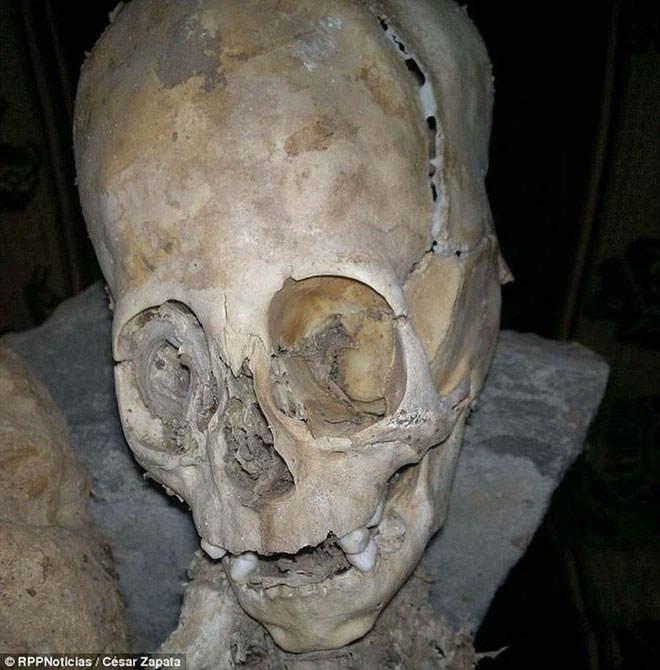
This mummy has a bizarrely shaped head measuring 50 cm in length.
Davila Riquelme invited three anthropologists from Spain and Russia to examine the specimen. They studied this strange mummy and concluded that it could not be human. They wanted to conduct DNA research on the remaining eye in the right socket to determine its genetic makeup and thereby help establish whether it was human. However, to date, the results of that study have never been made public.



















































